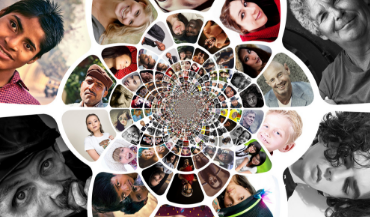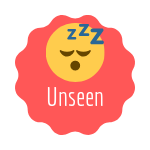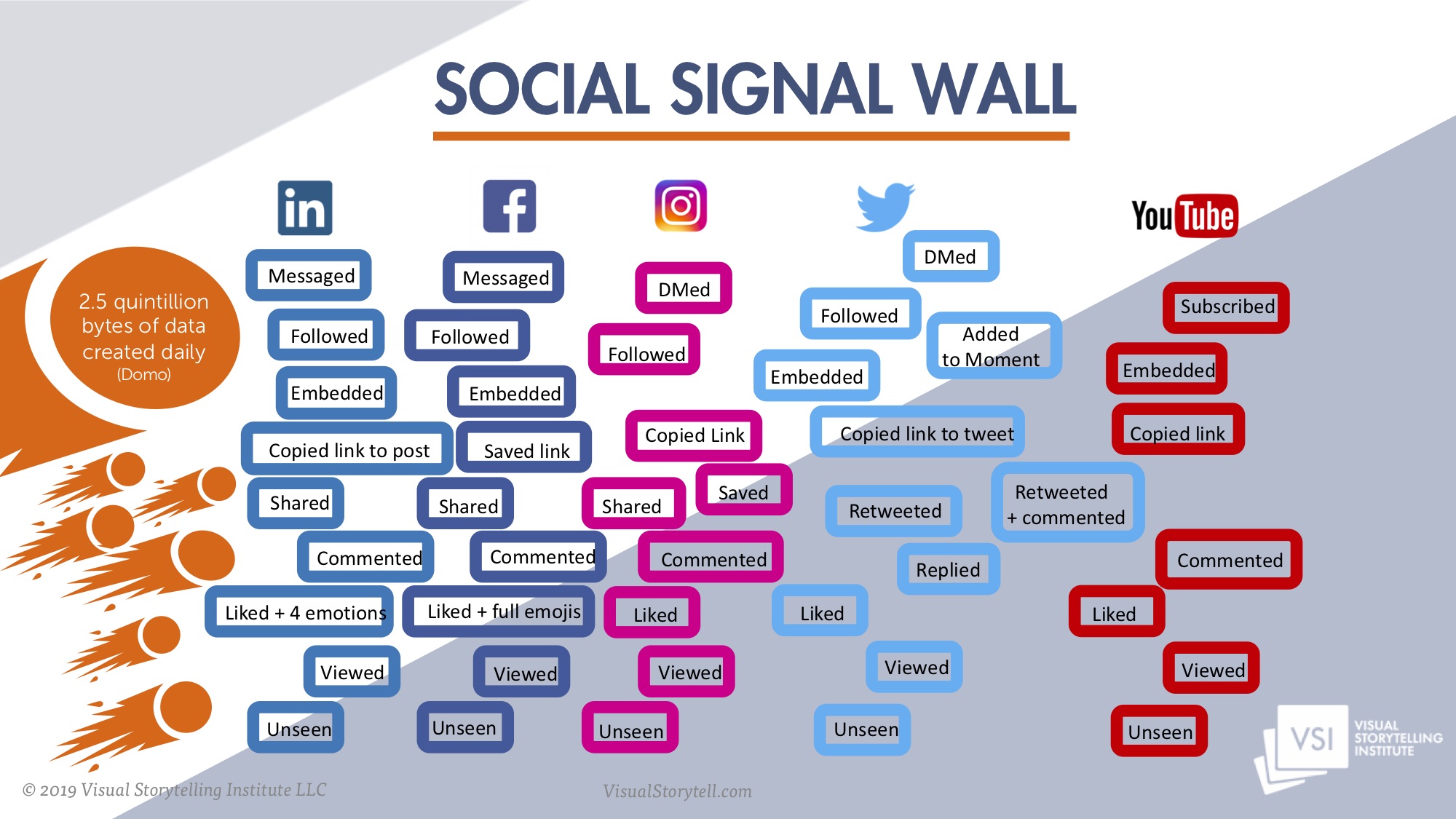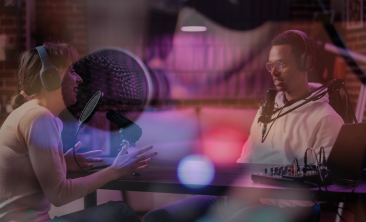
The Ultimate Guide to Revealing the Visual Grammar of Social Signals from your Audience
The Ultimate Guide to Revealing the Visual Grammar of Social Signals from your Audience https://www.visualstorytell.com/wp-content/uploads/2019/05/Social-signals-thumb.png 370 218 Shlomi Ron Shlomi Ron https://secure.gravatar.com/avatar/995c0cf093380b90c7704fda398c9addf4e5c605afbc92af5c3f01f67d65aa41?s=96&d=mm&r=g
Consider this scenario.
Yesterday you met an old friend and after the usual chitchat, the conversation sparked a fresh new perspective related to your work.
You’re all fired up, writing and rewriting your pearls of newfound wisdom you’re dying to share now with the world and reap the ultimate watershed of likes and comments.
You then turn to Canva or a similar design platform and fervently piece together the right visuals that together with your killer caption – you can feel it – will blow away your followers on LinkedIn.
You’re working fast, yet efficiently savoring the rewarding feeling of being in the flow, the zone or whatever emotional state Shakespeare was in while he was working on the first page of his Romeo & Juliet…
Then arrives the moment of publishing.
You launch LinkedIn, take a quick glance at who viewed your profile – hey you can never know what dormant opportunity has been patiently waiting for you – wake up! Your rational storytelling mind glaringly interrupts:
NOT NOW!
Quick, you head to publish your post.
Make final word corrections, hit publish. And then…
The first 5 minutes, you still making final edits as a few stubborn concerns of potential misunderstanding keep bugging you.
Now the big wait starts for the world to notice your remarkable contribution and celebrate your smarts.
Definitely should be your turn now, you’re thinking!
The reality is that what you’re up against is hoping to hit as many levels in what I call the Social Signal Pyramid that works like a layered response wall that separates your story from your fans:
 Every story you publish on social may hit your audience on one or several response layers.
Every story you publish on social may hit your audience on one or several response layers.
How are you managing these social signals?
So, let’s unpack this.
Generally speaking, social signal levels could be grouped into three categories: 1) Passive 2) Active, and 3) at the top of the holy grail – the Relationship batch.
Now, depending on your business objective, you must aim carefully to hit the right mix of social signal levels.
The logic is quite simple.
The Social Signal Pyramid is nicely mapped to your classic stages of the buyer’s journey. Social media is more of a funnel platform in a virtual town piazza to drive traffic to points of sale or offline.
You can influence behavior change but the actual purchase act happens elsewhere – on your Website, over the phone, or in person.
The lower you are in the social signal level; your message will be digested as a bottom-of-the-funnel awareness play (AKA Discover stage). The higher the social signal level is, it’s where you are venturing into Top-Funnel (AKA Learn, Try stages – one stage away from the Purchase point).
So how do you read these social signals in your story?
Passive Category > Bottom Funnel
 Unseen: You can always bet you’ll hit the first default level where most content finds itself – the dreaded Unseen black hole. The stakes are high as over 65% of content goes unused because it’s either unfindable or unusable to users (SiriusDecisions).
Unseen: You can always bet you’ll hit the first default level where most content finds itself – the dreaded Unseen black hole. The stakes are high as over 65% of content goes unused because it’s either unfindable or unusable to users (SiriusDecisions).
Any social signal level above this dark abyss would largely get processed in some fashion in your followers’ brains.
 Viewed: LinkedIn will report the number of views your story received with an optimistic little graph that goes upwards. If you click on the number of views, you should see a list of views of people who saw your post broken – in its embryonic low view count – by job title and once you cross some important count milestone – by company names.
Viewed: LinkedIn will report the number of views your story received with an optimistic little graph that goes upwards. If you click on the number of views, you should see a list of views of people who saw your post broken – in its embryonic low view count – by job title and once you cross some important count milestone – by company names.
Don’t underestimate viewership numbers or people who saw your post but for some reason, your content did not make them lift their heavy finger and literally express it. These could be regular “flies-on-the-wall-folks,” that even with their minimum effort of just throwing your way a glance, are sending you a strong signal just the same:
“You’re interesting, keep up the good job and at some point, or never will be more explicit in our social signal!”
Active Category > Mid-Funnel
 Liked: The next group of people are the first inhabitants in the Active territory across the Social signal Pyramid. Something you wrote talked to them or found a similar twin experience in their lives. They read your post and made the incredible effort to hit the default Like thumb up icon.
Liked: The next group of people are the first inhabitants in the Active territory across the Social signal Pyramid. Something you wrote talked to them or found a similar twin experience in their lives. They read your post and made the incredible effort to hit the default Like thumb up icon.
Recently, social networks like Facebook and LinkedIn added a few more visual icons to express specific emotions. On Facebook, you’ll find the entire emoji lineup and on LinkedIn, if you hold down the Like button, you’ll see four more icons: ![]() Regardless of the enhanced visual grammar, I bet most people are not even aware of the existence of the extra signals due to the fact that other than the Like button they require extra effort to reveal them.
Regardless of the enhanced visual grammar, I bet most people are not even aware of the existence of the extra signals due to the fact that other than the Like button they require extra effort to reveal them.
Overall, the social signal the Likes are telling you:
“Yes, you were right. You sure got a nice pearl of wisdom here, and I’d like you to know this by awarding you my precious Like as well as let my network know about your gem and by reference my interests”
 Commented: The next level up you will find people that not only saw your story, got excited and liked it but your story also triggered another perspective or idea they think it’s important for you to see. Their comments could be short congratulatory statements, neutral, positive with expansion to your original argument or complete counter-arguments.
Commented: The next level up you will find people that not only saw your story, got excited and liked it but your story also triggered another perspective or idea they think it’s important for you to see. Their comments could be short congratulatory statements, neutral, positive with expansion to your original argument or complete counter-arguments.
Positive comments will include likes, neutral and negative comments would leave likes hanging to dry. Since this group has evolved from expressing themselves only by visual iconography, if they really interested in getting your attention, they might use your @name in their comment for squeezing an extra attention juice:
Comments are important signals as they use your original story as a springboard to express their ideas. That’s what they say:
Positive short: “So true @your_name” or “FYI @someonelse_name”
Neutral/weird: “wide spectrum of non-related comments.”
Super positive: “Great gem and this reminds me also of a, b and c.”
Negative: “Right but a, b, c and d.”
 Shared: This group of people really got your gem and don’t rely on the weak broadcasting signal of a measly Like for you and their people to notice, so opt to hit the Right Arrow Share button. They might accompany their Share with a short comment and a mention @your_name. This heroic act will transform them from passive storytellers into active storymakers where they’re keen to voice their opinions:
Shared: This group of people really got your gem and don’t rely on the weak broadcasting signal of a measly Like for you and their people to notice, so opt to hit the Right Arrow Share button. They might accompany their Share with a short comment and a mention @your_name. This heroic act will transform them from passive storytellers into active storymakers where they’re keen to voice their opinions:
“I so hear you and I’d like to help you spread the word with my tribe my way!”
RELATIONSHIP GROUP > Top-Funnel
 Followed: The next two levels are all about expressions of striking personal relationships with you. In sales funnel lingo, they’re ready to make you or become your MQL (Marketing Qualified Leads by exchanging contact info). They make a personal contact request so down the road may even become a customer, partner, vendor or simply – a friend.
Followed: The next two levels are all about expressions of striking personal relationships with you. In sales funnel lingo, they’re ready to make you or become your MQL (Marketing Qualified Leads by exchanging contact info). They make a personal contact request so down the road may even become a customer, partner, vendor or simply – a friend.
Folks from this social signal level come in two volumes: Low and High. Low Volume with the simple act of hitting the Follow button. This group of people, not only saw your story, most likely liked it or even commented and now are willing to keep hearing from you by announcing their new relationship with you to their network to see.
In essence, they’re telling you:
“Wow what a great gem, we now can go steady. I so look forward to your future gems and exploring mutual collaboration opportunities”
 Messaged: This High-Volume supergroup under the Relationship category offers you the most out of your gem.
Messaged: This High-Volume supergroup under the Relationship category offers you the most out of your gem.
Why?
Simple. Your story caused these folks to send you a private message. The fact that they chose a private vs. public communication channel signals that they’re interested not only in developing a personal relationship with you but they’re ready in making initial contact.
Like any other advanced social signal levels, these private messages could come in a couple of flavors: Job seekers, sales pitches, comment with personal aspects, requests to join groups, invites to events/podcasts, and lastly requests for upgrading the communication to a chat or even an in-person meeting.
And yes, the first examples may feel as blatant sales pitches, but occasionally you’ll come across messages with thoughtful comments that first extend relevant value and then ask for some kind of return.
Regardless of the message flavor, they’re all basically telling you:
“Indeed, your gem is quite a riot. You were right! I’d like to start a dialog.”
Now that you have a better understanding of how to read the various social signal levels your stories will generate, it’s important to know that any social signal level offers you a great opportunity to respond back and move up the relationship up in the Social Signal Pyramid and by extension the buyer’s journey funnel.
So be generous, acknowledge people who made the effort and occasionally give a shout out to the flies-on-the-wall, too. People like to be singled out and be appreciated.
Your overall social signal volume or engagement on social is highly tied to the media format you’re using (video will rank the highest vs. text-only), and the engagement volume to your story. Once you cross a tipping point, LinkedIn algorithm, for example, will bump up exposure to your story, and more people will be eager to join a crowded love fest around your content.
And just in case, you’ve wondered, here is a capture of the distinct social signals your content will encounter on the top five social networks. Interestingly, you’ll find the general pyramid structure similar with minor variations that create a unique platform culture you would need to consider.
 It won’t happen overnight as this is a long game but be sure to play a role also on the reactive side and respond generously and consistently to other people’s gems and they’ll pay you back next time.
It won’t happen overnight as this is a long game but be sure to play a role also on the reactive side and respond generously and consistently to other people’s gems and they’ll pay you back next time.
In conclusion, word of caution, please avoid turning the Social Signal Pyramid into your “Ego Altar” and falling into the trap of chasing Likes like those Hurricane Chasers.
David Kelley, IDEO’s founder aptly coined the term Creative Confidence, which means “the notion that you have big ideas, and that you can act on them.”
Therefore, share your meaningful stories with creative confidence as any social signal is a fresh learning opportunity to develop new dialogs and start new relationships.
How are you managing your social signals?
Need help developing your business story to generate the right social signals?
Book a FREE conversation.
- Posted In:
- Story Telling
- Visual Storytelling
Shlomi Ron
Shlomi Ron is the founder and CEO of the Visual Storytelling Institute, a Miami-based think tank with a mission to bring the gospel of visual storytelling from the world of art to more human-centric and purpose-driven marketing. A digital marketing veteran with over 20 years of experience working both on the agency and brand sides for Fortune 100/500 brands such as Nokia, IBM, and American Express. He started VSI to combine his marketing expertise with his passion for visual stories stemming from his interests in classic Italian cinema and managing the estate of video art pioneer, Buky Schwartz. At VSI, he helps brands rise above the communication noise through visual storytelling consulting, training, and thought leadership. Select clients include Estée Lauder, Microsoft, and Cable & Wireless – to name a few. He currently teaches Brand Storytelling at the University of Miami’s Business School. Thought leader and speaker at key marketing conferences. He is also the host of the Visual Storytelling Today podcast, which ranks in the top 10 best business storytelling podcasts on the Web. His book: Total Acuity: Tales with Marketing Morals to Help You Create Richer Visual Brand Stories. Outside work, he is a nascent bread baker, The Moth fan, and longtime fedora wearer likely to jive with his classic Italian cinema interest.
All stories by: Shlomi RonYou might also like
2 comments
This site uses Akismet to reduce spam. Learn how your comment data is processed.





Leave a Reply